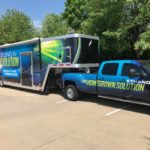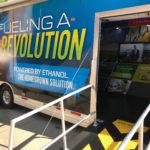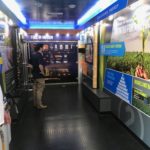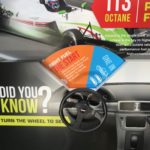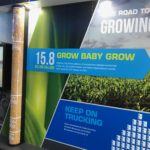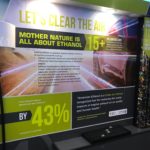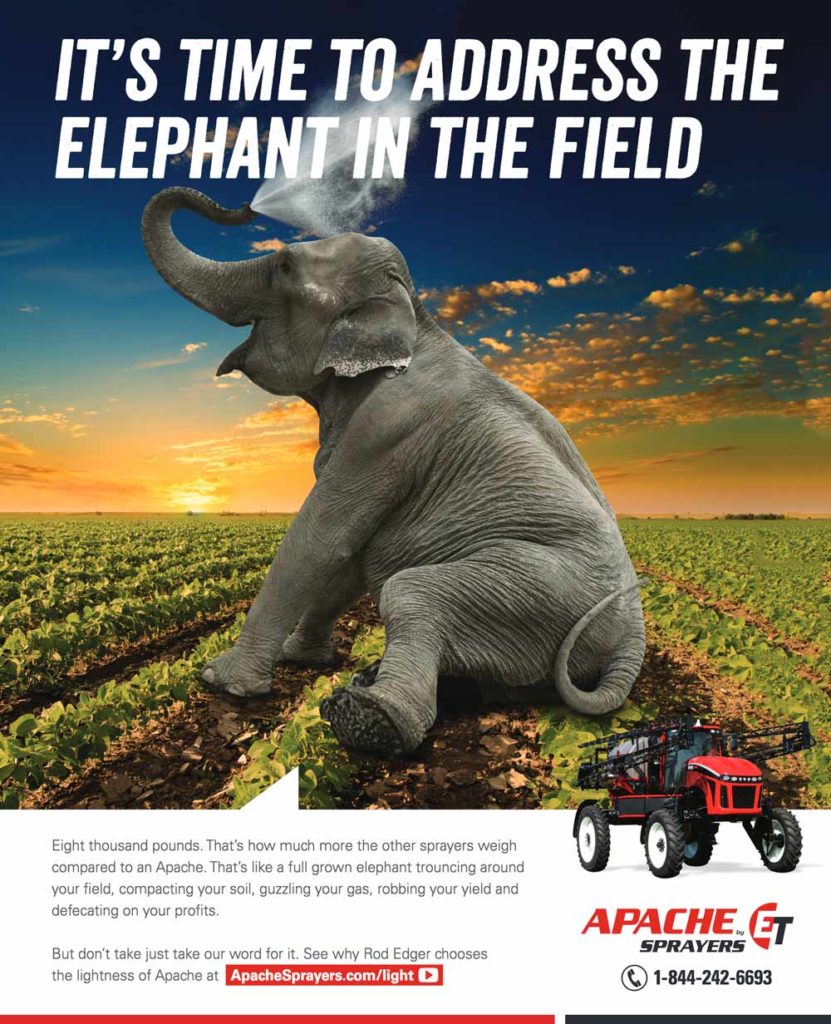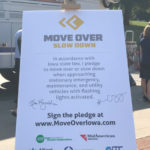Through our partnership with the Iowa Corn Growers Association (ICGA), the Lessing-Flynn team was introduced to Golden Grain Energy. Golden Grain Energy is a privately-held company dedicated to adding value to northern Iowa’s corn production through the promotion of ethanol, a cleaner-burning fuel made from corn. As a strategic partner, Lessing-flynn worked with Golden Grain Energy and several other sponsors to create a Biofuels Mobile Education Trailer which now travels the state of Iowa educating the public about ethanol production.
The situation
Many American consumers are unaware of the many benefits of ethanol for the economy (local and national), the environment — even engines! Our challenge was to create an engaging educational display within the Biofuels Mobile Education Trailer to explain the benefits of ethanol production and encourage its use as a preferred fuel option and create support for it’s production within our state.
With a lot of information and limited display space, our team wanted to be creative and strategic in content creation to make sure the experience was informative, digestible, high-tech and relevant.
The solution
When planning the Biofuels Mobile Education trailer’s content, we worked with the team of sponsors to establish our audience as potential ethanol consumers, with nods to farmers and agriculturalists who would also be interested in viewing the display. From there we chose our theme “Engine Smart, Earth Kind” and categorized our content planning to highlight four key buckets (or as we call it — the four E’s of ethanol):
The environment
Many consumers walking through the trailer care about the environment and how ethanol plays a role in taking care of our world. Adding ethanol to gasoline reduces tailpipe emissions of harmful pollutants, such as carbon monoxide, exhaust hydrocarbons, air toxins and fine particulate matter. Plus, ethanol production requires less water than gasoline production.
This content portion was highlighted with a cylindrical tube, hot wheel car display and large infographics with supporting facts. An endorsement for ethanol from the American lung association was also featured.
The economy
Ethanol production brings huge benefits to the American economy with all the jobs it supports and creates. To highlight this, we created a dimensional cylindrical tube display that broke down the many uses of corn with an accompanying flow chart on the ethanol production timetable and the many careers involved at every stage.
Homegrown energy
Our nation’s energy independence and it’s role in our economy is another crucial benefit to consumers. Using homegrown, renewable energy, the U.S. can replace 540 million barrels of crude oil imported from overseas. We used infographic designs to highlight this and several other supporting facts.
Engine smart
Engine performance was the last section the audience would engage with. This section was strategically placed at the end of the trailer layout because this was the a key takeaway that we wanted visitors to remember when they exited the trailer.
The content in this section helped educate consumers on which fuel would work for their vehicle, so they were aware of their ethanol options at the pump. This section included an interactive touchscreen and steering wheel to displays facts, and an ethanol pump with an interactive iPad inside the pump displaying the five different blends — E-15, E-30, E-85, Regular Unleaded 87 and Super Unleaded 87.
Bonus Content: View the E-15 “Super Duper” campaign that Lessing-Flynn completed with Iowa Corn.
The results
Since the launch of the Biofuels Mobile Education Trailer on June 27, 2018, it has traveled to more than 50 events and has had more than 15,000 visitors. To track our results we installed a people counter to the trailer entrance. The District Field Managers of Iowa Corn have had nothing but positive feedback from consumers walking through the doors. It has been a positive tool for them to take to events for education, outreach and promotion.
In the last decade, food production, especially in the livestock sector, has come under attack from groups opposing animal agriculture. At the same time, more consumers are seeking transparency about how their food is produced.
The Situation
Many myths about the pig farming industry have been perpetuated by a vocal opposition that had a strong following among some segments of the consumer public. Recognizing this potentially volatile situation, the National Pork Board sought a way to both educate consumers about the people who raise pigs as well as correct any misguided information.
Strategically, we knew putting a face on food production was important. Education needed to start by communicating the community values pig farmers abide by and the common goals of farmers and consumers. We saw the opportunity to not only produce content with this focus, but also encourage pig farmers to engage via social media and share their stories. We knew the common message of the industry’s stewardship to animals, the environment and consumers alike would prevail if only it had a platform.
The Solution
The #RealPigFarming campaign began by identifying farmers and industry members with a willingness to share their compelling stories across multiple media platforms. The cornerstone of the content has been a series of videos profiling farm families whose daily lives in many ways mirror those of the consumers the campaign targets. We produced videos on location at farms around the nation to show real farmers, their families and interests.
Content was created for a variety of social channels, including farmer blogs on RealPigFarming.com, video discussions on Facebook Live, Snapchat takeovers and YouTube videos. Industry groups also became part of #RealPigFarming with 42 state pork associations promoting and leveraging campaign content in promotions and at trade shows, conventions and state fairs.
The Results
The #RealPigFarming campaign exceeded initial expectations by a wide margin, with each video netting more than 800 video views. The introductory video received more than 25,000 unique views, almost 2,000 social media post engagements and more than 132,000 members reached on Facebook.
The most popular video featuring the “Women of #RealPigFarming” yielded 354,000 unique viewers, almost 29,000 social media post engagements and more than 1.1 million people reached. That included more than 7,700 views on YouTube and 500 video views on Instagram. Four other videos produced for the campaign attracted between 7,000 and 44,000 unique video viewers. In all, the #RealPigFarming campaign reached more than 1.7 million people.
Your brand is the face of your business, and you want to put that face in skilled hands. You wouldn’t trust a face lift from some Joe Schmo plastic surgeon with Craigslist credentials, so why would you let someone design things for your company with little-to-no experience? Lessing-Flynn Creative Director Chris Hanson is here to explain what it takes to be a graphic designer, and why it’s important to find someone skilled to do your design work.
Iowa Corn, the state association for our local corn production industry, worked to create a campaign to show the benefits of E-15. This project would provide several benefits to the state — an economic boost for corn farmers, a lower-cost fuel for consumers and a cleaner fuel option to protect the environment.
The Problem
For years, there was either Unleaded (E-0), Super Unleaded (E-10) or E-85 for flex fuel vehicles. That was until E-15 came along. According to the EPA, E-15 is safe for use in any 2001 or newer vehicles. The newer 15 percent ethanol blend is better for the environment than standard gasoline and more economical for the consumer. Consumers needed to be educated and aware of this “new” fuel available to them at the pump.
Our challenge was to create an attention-grabbing educational awareness campaign that showed all the benefits of E-15. This campaign needed to be in a format that would be ubiquitous across different social and traditional broadcast media channels with a specified target audience comprising general consumers ages 18 to 65. We were also tasked with building a registration list of at least 500 people for American Ethanol gift certificates as part of the E-15 promotion.
The Solution
Strategically, we wanted the campaign to be lighthearted, informative and catchy. Since E-10 is more commonly referred to as “super unleaded” at the pump, we thought why not use this same thinking for E-15? Thus, the “super duper” unleaded campaign was born. We took this phrase and built out an animated video with a whimsical jingle that touches on the benefits of E-15 fuel and deployed it across different platforms — the Iowa Corn website, YouTube, social media accounts and traditional radio and digital ads.
The Results
The Super Duper Unleaded video campaign was extremely cost-efficient and effective in reaching our target audience. With more than 194,000 impressions, the cost-per-impression was less than $0.01 and with more than 41,000 video views, the cost-per-view was $0.07. A call-to-action button encouraging viewers to learn more after completing the video netted 248 direct visitors to a landing page on the Iowa Corn website. By the campaign’s end, we netted 822 sign-ups for the American Ethanol gift certificate giveaway, almost doubling the number in our initial goal. Of total visitors to the web page specifically designated for the program, 20 percent were converted into signups for the giveaway. In all, Iowa Corn website traffic increased almost 7 percent during the Super Duper Unleaded campaign.
When is the last time you invested in market research for your brand? If your answer is never or you can’t remember, we need to talk. While marketing research might have been the bane of your existence back in your college days, it’s actually one of the most under-utilized but useful tools available to marketers. Plus, there’s no law that says market research needs to involve an expensive panel and confusing statistics.
Here are the four simple tactics to incorporate into your marketing plan right now:
1. Distribute a customer survey. The customer always knows best, right? Survey customers to understand what they see as the main benefits of your product or service. Ask what matters most to them, and what they could care less about. What you learn may surprise you, not to mention it could lead to an entirely unique messaging or branding campaign.
2. Utilize feedback from events. Many organizations have annual internal events, such as dealer or sales meetings. Be sure you’re capturing feedback after the event. For instance, you might be spending a lot of money on a speaker that your employees found dull — don’t invite that guy back! Or maybe they like the breakout sessions but they dread attending because there are not enough breaks in the day. Ask attendees what well went (and what didn’t) and utilize the feedback to get the most out of your event each year.
3. Review new creative with key customers. You wouldn’t buy a house without asking your significant other or a friend to look at it first, so why do the same with your ad creative? Your customers are your brand’s family — their opinion matters. Show new ad creative to a few customers to make sure they’re understanding the key message and that their eye is being drawn to right spot — whether that’s a photo of the product, a call to action or your logo. Make sure everything translates correctly before you invest big dollars in a billboard or full-page magazine ad.
4. Monitor social media accounts. It’s true that social media can be a place where a lot of negativity comes out of the woodwork — everyone is braver behind a computer screen. But, monitoring and analyzing social media conversation surrounding your brand or industry also gives you a peek at what customers truly think. If you’re consistently getting complaints about customer service experience, it might be time to invest in staff training. Or maybe a customer loves your product but wishes it had an extra feature. Sometimes you just need to pull back the curtain a little to discover what’s really going on.
Interested in learning more? Lessing-Flynn can help!
What if food could make the world a better place? It can. And the food to do it is ham. Lessing-Flynn partnered with the National Pork Board to launch Hams Across America, a charitable campaign that has Americans giving and going ham.
The Objective
Develop a pay-it-forward holiday campaign that encourages Americans – from pork producers to pork lovers – to come together through the irresistible power of ham. We envisioned a campaign that would inspire people to give a ham to friends and loved ones, or members of their community who may be in need. The vision was clear. So it was time to get to work.
The Solution
The Hams Across America campaign launched during the 2016 holiday season with the goal of uniting Americans through a shared love of ham. The strategy included developing an animated video introducing the campaign, social graphics and traditional PR tactics. Utilizing the #RealPigFarming social media channels allowed us to share stories of pig farmers making donations to a wide audience. In 2017, we increased the reach of the campaign with a large launch event and donation to the Iowa Food Bank, and followed this with daily stories of additional donations.
The Results
America went ham! In its first year, the #RealPigFarming social pages shared stories of 32,600 hams and pork product donations. We built on that success in the second year when more than 2.4 million pounds of pork were donated, and 39 stories of donations were shared on the #RealPigFarming social media channels. In all, posts had more than 200,000 impressions combined in just one month. That’s a lot of ham!
A year ago, I set out to find the hottest trends in promotional items and apparel – or “swag” as we like to call it at Lessing-Flynn — but, trends come and go and cooler, newer items take their place. Plus, I like to think I’ve refined my taste in the past year and a half. The Flynnies have high standards for what’s “cool” so I had to keep up.
So, without further ado, here is my second annual take on what’s big in the swag-o-sphere for the year ahead:
Tech It Out
As the world becomes more hands-free and mobile, tech continues to be a leading focus in swag trends. From BluetoothTM speakers, portable chargers or wireless earbuds, there’s no room to toss around cheap promotional products anymore. Typically, tech items will cost you a bit more upfront, but remember, fans love to receive items that they can utilize on a daily basis. It also makes them feel appreciated. The more uses it gets, the more brand awareness you receive, which then drives down the overall cost per use.
Highlight Your Brand
Thought neon was a thing of the past? Many of our agriculture and construction client customers continue to request and utilize bright fluorescents. These colors are hard to ignore after all.
Tumblers, Koozies and Coolers – Oh My!
Just like in 2017, YETI® tumblers and koozies (and various quality knockoffs) are still a great option. They keep drinks cold for a long time out in the field — and everywhere else for that matter — and it’s something a customer will want to hold on to.
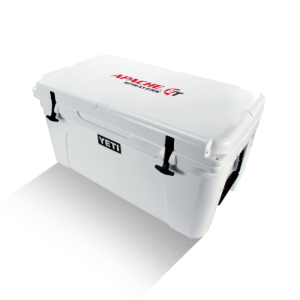
If tumblers and koozies aren’t enough, you can go bigger and better with a fully customizable cooler. High-end coolers are the way to go when you want to “treat” your key customers with something big or if you want to make a giveaway standout.
This year, Apache Sprayers gave away 100 of these YETI coolers with the purchase of a self-propelled sprayer — they SOLD OUT in record time.
Pop Some Bottles
Companies are allowed to have a little fun every once in a while, right? Show your appreciation with some custom bar accessories to make your brand the life of the party: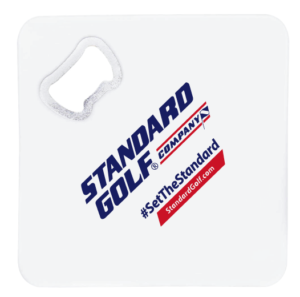
- Wine Bottle Tote – Take the fun with you to the next company outing, but make sure its full!
- Bottle Opener & Coaster – As part of a trade show promotion, Standard Golf left these customized coasters around gathering areas and social hours to promote their booth. They were swiped up quickly by show attendees.
T-Shirts Never Fail
We’re big fans of the tried-and-true custom T-shirt at LF. Stop by our office on any given day and you’ll see nearly half the office decked out in LF gear. We can testify that apparel companies have figured out that comfort and fit are just as important as the logo on the shirt. We go for T-shirts with super soft, rayon fabric in various styles depending on the look we’re going for. We love our tee’s and thus we love promoting ourselves as walking billboards around town — you can do the same for your brand!
Not sure where to start with your 2018 swag goals? We got you covered. Reach out to the team with the best swag insight in Des Moines!
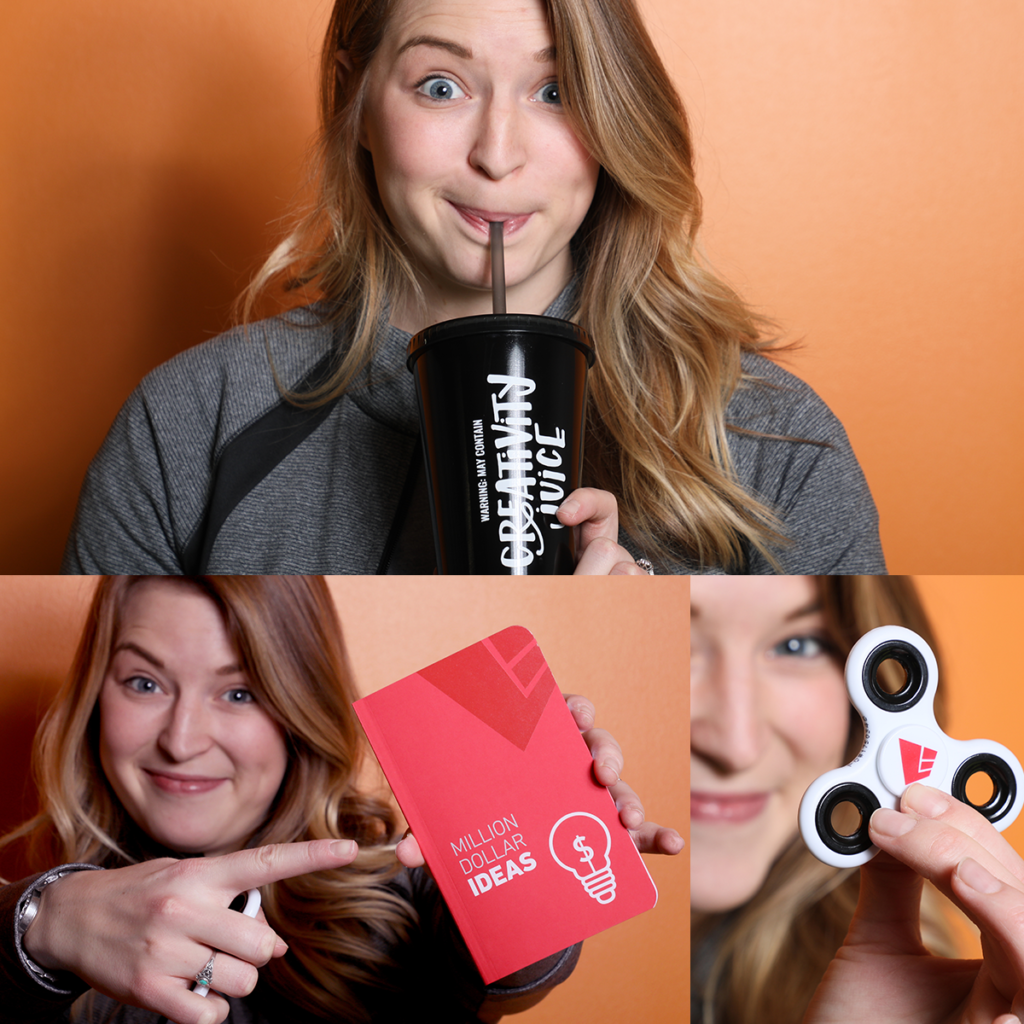
Cerni Motor Sales (Ohio), O’Halloran International (Iowa) and Uhl Truck Sales (Indiana and Kentucky) have joined forces to better serve customers and employees as TriVista.
Each dealership sells and services Navistar’s flagship brand, International® Trucks, offers maintenance services for International Buses, leases and rents trucks as affiliates of Idealease, Inc., and offers a number of other complementary commercial truck products and services.
The Problem
When three long-time, privately-owned medium-to-heavy-duty truck dealerships were planning to merge, they determined the need to create an umbrella brand strategy to position themselves as a single brand but allow each individual location to maintain its own identity in its local market.
The Solution
Lessing-Flynn helped develop the TriVista name and brand identity that would provide flexibility among the new parent company and individual truck dealerships. A brand standards guide helped ensure the new brand was being used consistently across the different markets.
The Results
Following creation and deployment, Lessing-Flynn helped develop a communications plan to be rolled out to OEM partners, employees, customers and industry media. The launch of the new brand was a success. So, what’s next? Stay tuned.
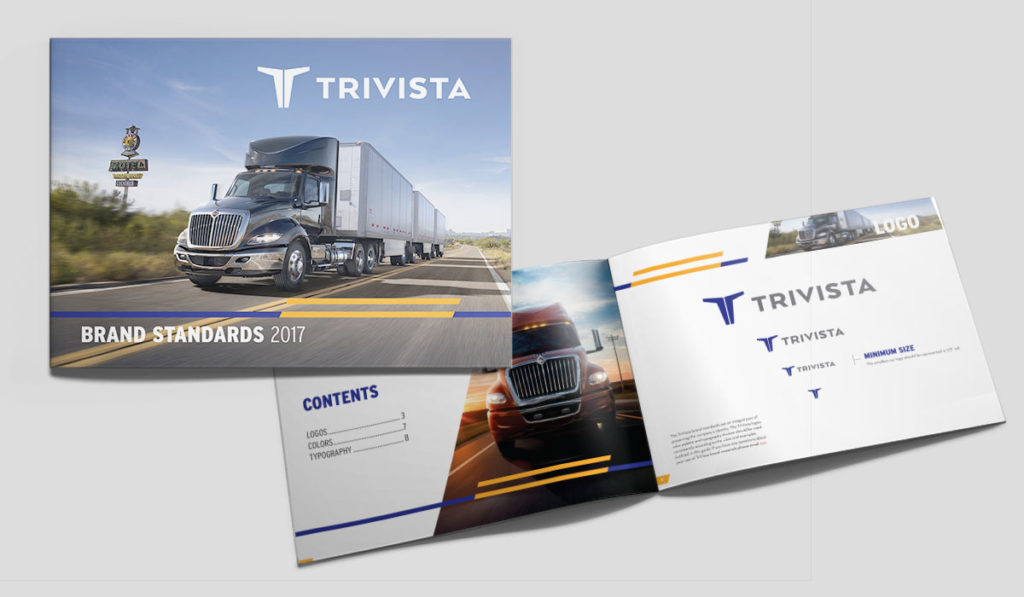
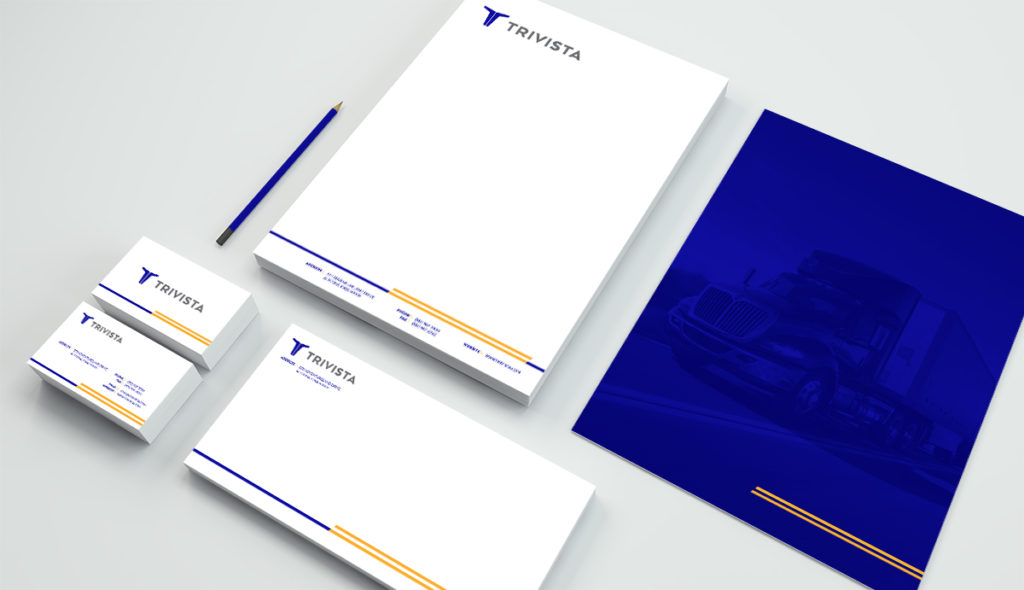
In 1993, Gary Sage set out to create a system for a better oil change. His idea was simple: create a machine that would eliminate oil spills on the ground or on himself. After some initial trial and error, the Sage Oil Vac system was born. Sage quickly realized that his invention would not only be cleaner for the average jobsite but environment as well. Not to mention it cut oil change times in half. Today, the ever-expanding Sage Oil Vac on-site fluid handling and maintenance products have made their way into a number of industries including oil and gas field service, heavy equipment fleet operators, generator maintenance, rental fleet companies and more.
The Problem
Knowing the history of Gary’s initial goal when he created the Sage system, it was well-established that one of the biggest jobsite pain points was the mess that comes from changing oil. Our challenge was straightforward — how can we promote one of the most sought-after benefits of Sage Oil Vac equipment: its cleanliness. We know Sage equipment reduces oil changing hassles, mess, expense and time — but getting customers to understand the main benefit (LESS MESS) and eliminate their pain point was our first priority.
We drew inspiration from Sage’s attendance at CONEXPO where customers continually shared how they needed a system to make changing oil faster, easier and of course… cleaner. Competitor research executed via trade publications relative to the Sage Oil Vac consumer audience showed us that their competitors were doing just what we expected — ads with boring equipment photos including lists of features and benefits. While that’s all fine and dandy… is this strategy really going to grab anyone’s attention in all the advertising noise? Probably not. It was time to go to the drawing board.
The Solution
The following Lessing-Flynn brainstorm sessions were filled with crazy ideas — but then someone said, “Hey, what if we made a guy in a tuxedo use some Sage equipment?” That was when we all sat up. It was ironic, creative and different. That day, “The Cleanest Man on the Jobsite” concept was born.
Not only did this take a more relaxed and playful approach, than many of their rough-and-tough competitors, it actually spoke to the primary benefit — ending the work day as clean as you started. With the headline and theme determined, applying the creative look was either going to make or break the concept. We knew tossing a guy in a tux out onto a jobsite was nutty — but, with a well-executed photoshoot and the right applications, we knew we could carry this campaign home.
The Results
This campaign launched in June and has continued to bring in big successes with high engagement and reach. You can find the “Cleanest Man” creative on Sage Oil Vac’s social media channels, in their paid media strategy, company swag and we even incorporated it into their ICUEE tradeshow booth. The campaign’s video “So Fresh, So Clean” also won a 2019 Gold Addy Award from the American Advertising Federation. We’re so excited to see so many opportunities for this campaign and as it continues to grow legs in other avenues, Lessing-Flynn will be ready to execute each tactic with the same quirky creativity from initial brainstorm.
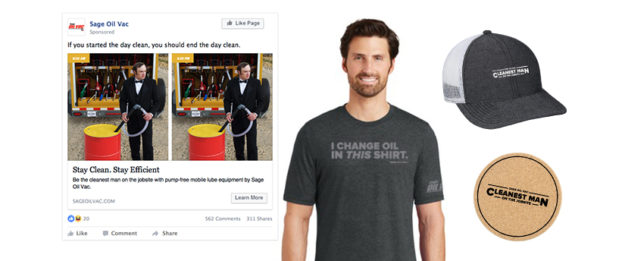
When you skim through agriculture magazines and websites, you’re inundated with imagery of fields, equipment or farmers in their “natural habitat.” For the grower audience consuming this content, these ads can become, to be honest, extremely boring. Lessing-Flynn worked with Apache Sprayers to execute the “Elephant in the Field” campaign ad to stand out — it is visually compelling and confronts the issue of compaction head on.
The Problem
Compare the weight, efficiency and cost of ownership of all sprayers on the market, and it’s clear that Apache Sprayers are the best pound-for-pound sprayer — they are the lightest in the field. In fact, competitor machines weight about 8,000 pounds more resulting in unnecessary and unwanted soil compaction. To translate this problem, we decided to quite literally address the “elephant in the room” with a clever ad campaign featuring an actual elephant.
The Solution
After extensive customer research, Lessing-Flynn found that farmers were concerned with compaction and its resulting yield impact. This ad aimed to pinpoint the pain that many growers feel when it comes to their spraying equipment. While compaction is a serious issue for many, the elephant in the field ad provided a clever and witty way to discuss this problem.
“Elephant in the Room” Ad Goals:
- Develop an eye-catching campaign that is unique, and directly discusses the concerns growers have when buying equipment.
- Test effectiveness of messaging and identify key areas of optimization.
- Include a strong call-to-action where interested individuals could get more information.
The Results
Lessing-Flynn worked with Discida (formally iTracking Research) to effectively identify key messaging and creative advertisements to place for Apache Sprayers. This put the creative to the test with real people using heat maps, gaze plots and candid feedback. These scientifically-based results gave insight into what was important to the grower and the effectiveness of the ad.
Our findings with the heat map and eye tracking showed several things related to our initial goals:
- Panelists commented the image was unique, interesting and attention grabbing.
- The hero image was a notable departure from the “usual” images our farmer panelist see in ag advertising and websites.
- In hero image/tagline combination unmistakably represented the concept of soil compaction.
- In addition, the hero image effectively drew early visual interest down to the Apache Sprayer image and logo.
- The video CTA received significant attention and had the highest likelihood of conversion.
Discida Heat Map Tracking:
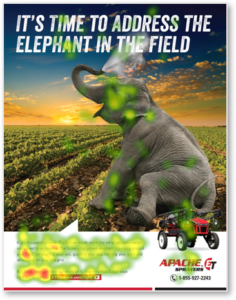
Real Farmer Feedback During Testing:
- “That’s a big ole elephant. I like the writing of this one, it’s the clearest of the 3 designs. It does grab your attention. I like the clarity, it’s easy to read. I like the white text over the blue sky.”
- “This ad is more compelling. The elephant makes a point right away. I think the messaging is more compelling, I got the point quickly. Apache is making a better case in differentiating from other brands.”
The campaign was initially launched on a national level across the United States and Canada. With well-received feedback, Apache Sprayer dealers requested placements in local and regional publications. Lessing-Flynn then developed additional ad sizes that dealers could customize with their own dealership information and logo.
Final Print Ad:
The Lessing-Flynn Marketing Mythbusters are a crew of crafty marketers ready to bust a cap on the myths that are mucking up your brand. Today, we’re taking on native advertising. This term is thrown around frequently these days, but do you know what it really means? No sweat — marketing mythbuster and Media Specialist Shannon Hughes is here to clarify the difference between native advertising and content marketing.
Late last fall, our client, the Iowa Association of Electric Cooperatives, came to us with an issue — the lives of their members’ employees were at risk, and they needed help. Utility workers who were working on the side of Iowa’s roadways were experiencing too many close calls with distracted drivers.
The Problem
It might be hard to believe that the men and women who put their lives on the line every day working with high-voltage power (sometimes elevated as high as 150 feet in the air) have to worry about a little traffic on the road. Thanks to proper training and countless safety procedures, they know how to do their job safely — it’s really the people like you and me putting them at risk. Distracted drivers and ignorance of Iowa’s move over or slow down law combined to create a dangerous work environment for utility workers.
Iowa Association of Electric Cooperatives checked with other electric utilities in the state to see if they too were experiencing the same issue. They talked to all of them – Alliant Energy, Iowa Association of Municipal Utilities, ITC Midwest and MidAmerican Energy. All had the same issue. In fact, in the first half of 2017, MidAmerican reported more than 500 incidents of motorists striking utility structures, including utility poles. Thankfully, there have been no fatalities yet, but it could be a matter of time before the unimaginable happens. These electric utility organizations wanted to educate driver about the state’s move over law proactively.
The Solution
With all five Iowa electric utility organizations in agreement, they looked to Lessing-Flynn to suggest a campaign and a plan for a state-wide public service announcement. Eager to help, we assembled our team for a brainstorm. We brought our creative minds to the table and developed a coordinated plan of action to reach Iowa’s drivers from all angles. The strategy included elements of digital marketing, public relations, media pitches, social media marketing, print ads, radio, bill stuffers and more.
We shared a variety of creative ideas that ranged from jaw-dropping to safe, and ultimately, all five organizations agreed on a witty concept that sarcastically reminded drivers to be aware. The “Move Over” campaign was born. In this campaign, a strong call to action encouraged drivers to pay more attention and take an online pledge to move over or slow down for utility vehicles, and then share the pledge on their social networks.
While we were at work on the campaign, our client had another effort underway — lobbying the state legislature. Within one legislative session, the governor signed a bill that expands the law requiring Iowa drivers to move over or slow down for emergency vehicles to now include bucket trucks and other utility vehicles. We coordinated the launch of the campaign and MoveOverIowa.com to coincide with the effective date of the new law on July 1, 2017. Using the materials we provided, our clients (now five of them) distributed the press release, pitched to media and shared social media messages via their respective channels.
The Results
Our combined efforts culminated on July 10, when Governor Kim Reynolds held a press conference where she signed the Move Over pledge and declared the week as “Move Over or Slow Down” Awareness Week. Nearly all major news outlets across the state – including print, news and radio – shared stories and articles to raise awareness among drivers. To date, thousands of users have visited the landing page, and the pledge has been shared hundreds of times across Facebook and Twitter.
On behalf of the Lessing-Flynn team, it was a pleasure to contribute to this powerful effort to protect lives. So, the next time you see flashing lights on the side of the road — do the right thing — move over or slow down.
Move Over Press Conference Photos
